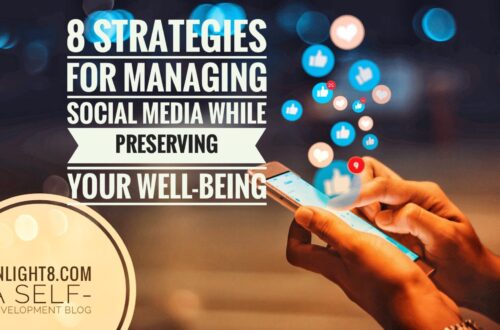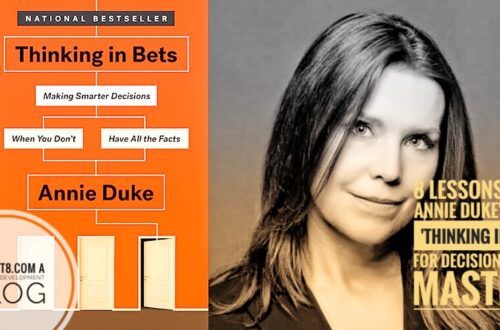
8 Lessons on Negotiation from Chris Voss’s book “Never Split the Difference”
The art of negotiation is an essential skill set, especially in today’s modern world. It is vital to achieving our goals, building strong relationships, and resolving conflicts effectively. While not everyone is born with negotiation skills, and schools rarely teach them, cultural differences often influence our ability. However, many of our personal interactions, particularly in professional settings, require us to be skilled negotiators.
In his book “Never Split the Difference (affiliate link),” author and master negotiator Chris Voss discusses the true art of negotiation. He presents a more creative problem-solving approach that transcends the ineffective methods typically taught in business schools, offering insights into how negotiation actually occurs in real-life situations, especially in high-stakes contexts. As a former FBI hostage negotiator, Voss shares practical techniques that highlight why many current negotiation strategies often fail.
Here are eight key lessons from Chris Voss’s book, “Never Split the Difference,” which I believe is one of the best negotiation books out there.
1. Use Tactical Empathy, Not Logic Alone

In “Never Split the Difference,” Chris Voss emphasizes the importance of employing tactical empathy in negotiations, rather than relying solely on logical arguments. We need to recognize that negotiation often revolves around emotions rather than just facts. By genuinely striving to understand the other person’s perspective, we establish a connection that goes beyond mere negotiation tactics. When we label emotions, phrasing it as, “It seems like we are concerned about…”— we foster an environment of trust and open communication. This approach helps us disarm defensiveness and encourages a more collaborative dialogue.
Moreover, employing tactical empathy allows us to influence outcomes more effectively. As we engage with others by reflecting their feelings and concerns, we create an environment that encourages them to share more openly with us. This technique not only enhances our understanding of their needs but also positions us as attentive and trustworthy partners in the negotiation process. By prioritizing emotional awareness, we can shift the focus from a confrontational stance to a cooperative one, ultimately leading to more successful and satisfying agreements for both parties involved.
2. “No” is More Powerful Than “Yes”
In “”Never Split the Difference,” Chris Voss emphasizes the surprising strength behind the word “no.” Rather than relentlessly pursuing a “yes,” we can find greater value in inviting someone to say “no.” When we frame our questions this way, we help the other person feel in control and safe, which paradoxically fosters a more meaningful conversation. Instead of asking, “Do you agree?” we might better engage by asking, “Is this a bad time to talk?” or “Have you given up on this project?” These approaches not only grant the other person a sense of autonomy but also encourage genuine dialogue that allows us to uncover their true thoughts and feelings.
By embracing the power of “no,” we create an environment where open communication thrives. When we let others express their concerns or hesitations, we pave the way for collaboration and understanding. This shift in perspective enables us to delve deeper into the conversation, transcending superficial agreement and fostering genuine connections. Ultimately, our ability to accept and invite “no” enriches our interactions and strengthens our negotiation skills, turning potential resistance into opportunities for constructive engagement.
3. Use Calibrated Questions

In our negotiations, we can leverage the power of calibrated questions to create a more collaborative atmosphere. By using open-ended “how” and “what” questions, such as “How are we going to address this challenge?” or “What aspects of this proposal resonate with you?”, we invite our counterparts to engage in problem-solving alongside us. This approach empowers them to take ownership of the conversation, allowing us to work together constructively instead of positioning ourselves in opposition. As we ask these questions, we guide the dialogue toward solutions that benefit both parties, fostering a sense of partnership.
The core insight from “”Never Split the Difference” by Chris Voss teaches us that successful negotiations hinge on emotional intelligence and effective communication rather than mere compromise. By focusing on understanding the underlying motivations and feelings of all parties involved, we create opportunities for better outcomes. Through this strategic approach, we move away from the notion of splitting the difference and toward crafting agreements that truly satisfy everyone’s needs, ultimately enhancing our relationships and making future negotiations smoother.
4. Mirroring Builds Instant Rapport
Mirroring serves as a powerful technique for building instant rapport in our conversations. By repeating the last few words or key phrases that someone just shared, often forming them into a question, we invite them to delve deeper into their thoughts. This approach not only encourages further dialogue but also makes the other person feel valued and understood. We often underestimate the impact of this simple yet effective tool; it taps into our unconscious desire to connect with those who reflect our own expressions and ideas. As Chris Voss emphasizes in “Never Split the Difference,” creating that bond fosters a more open exchange of information.
When we employ mirroring, we actively demonstrate our engagement in the conversation, which helps create a safe space for sharing and open dialogue. As the other person elaborates, we gain valuable insights while simultaneously nurturing a sense of trust. The beauty of this technique lies in its natural feel—rather than coming off as manipulative, it enhances genuine communication. By consistently using mirroring in our interactions, we strengthen our relationships and deepen our understanding of one another. This practice not only enriches our discussions but also reinforces the connections we build in both personal and professional settings.
5. Anchor Their Emotions, Then Set Extreme Anchors

In “Never Split the Difference,” Chris Voss emphasizes the power of emotional intelligence in negotiations, urging us to conduct “accusation audits.” By proactively addressing any potential objections or negative perceptions the other party might have about us or our proposals, we can effectively diffuse tension before it escalates. This approach opens up the dialogue in a constructive way, making their actual concerns seem less daunting. By disarming their initial reservations, we create an environment conducive to productive discussions, allowing us to steer the conversation more strategically.
As we navigate the negotiation landscape, Voss encourages us to set extreme anchors when making offers. If we are buying, we should aim significantly lower than what we ultimately hope to pay; if we are selling, we should start at a much higher price. This tactic shifts the negotiation range in our favor and establishes the psychological boundaries for the entire conversation. By presenting an initial figure that deviates substantially from our target, we establish a frame of reference that influences the other party’s perceptions and ultimately drives the outcome in our favor.
6. Get to “That’s Right,” Not “You’re Right”

In our conversations, we often hear phrases like “you’re right” or “that’s right,” but understanding their implications can have a profound impact on our communication. When someone responds with “you’re right,” they may be trying to end the discussion without fully engaging with our perspective. In contrast, when we hear “that’s right,” it signals that we have accurately captured their viewpoint. This moment of clarity arises from our active listening skills and our ability to paraphrase their concerns effectively. By focusing on truly understanding their position, we create an opportunity for deeper connection and trust.
Reaching that pivotal “that’s right” moment is more than just a verbal acknowledgment. It’s a sign that we’ve established a genuine understanding between us, and this breakthrough not only validates their feelings but also lays the groundwork for a more productive dialogue moving forward. As we hone our listening and communication abilities, we empower ourselves to navigate challenging conversations with empathy and clarity, aligning our goals with those of others. By striving for genuine understanding, we pave the way for collaboration and mutual respect in all negotiations and discussions we encounter.
7. The Ackerman Model for Price Negotiation

In “Never Split the Difference,” Chris Voss introduces us to the Ackerman Model, a strategic approach to price negotiation that enhances our bargaining power. We begin by setting our initial offer at 65% of our target price, which provides a solid foundation for negotiations. From there, we plan our incremental raises to 85%, 95%, and finally reach our target at 100%. This method enables us to create space for negotiation while demonstrating our commitment to staying within a range that accurately reflects our true valuation. Throughout this process, we also utilize empathy and varying ways of expressing “no” to maintain a constructive dialogue, ultimately fostering a collaborative environment rather than an adversarial one.
As we reach our final offer, we ensure it’s precise—down to $37,893, rather than rounding up to $38,000—showing that we have thoughtfully calculated our limits. This specificity communicates to the other party that we are at our maximum without appearing arbitrary. To further emphasize our commitment to the negotiation, we can introduce a non-monetary item at the end, signaling that we are willing to concede to reach a mutually beneficial agreement. By employing this structured approach, we avoid conceding too much too quickly and maintain control over the negotiation process, ultimately leading to more favorable outcomes.
8. Beware of Deadlines (Yours and Theirs)

When it comes to negotiations, we must remain vigilant about deadlines—both our own and those imposed by others. Often, we find that deadlines feel more rigid than they genuinely are. As we approach these time constraints, we can observe that flexibility emerges, and concessions become more likely. By keeping our deadlines to ourselves, we deny the other party valuable leverage that could influence our decision-making. Instead, we can use these pressures to our advantage, navigating our way through negotiations with a clear sense of what we want without divulging unnecessary information.
We must recognize the strategic nature of deadlines in negotiations. When someone presents us with an urgent deadline, we should approach it with skepticism, understanding that it may be a tactic designed to rush us into hasty agreements. By maintaining composure and showing that time constraints do not easily sway us, we equip ourselves with greater power in the negotiation dynamic. Ultimately, the party that remains calm and collected in the face of pressing deadlines often holds the upper hand, allowing us to negotiate from a position of strength rather than vulnerability.




